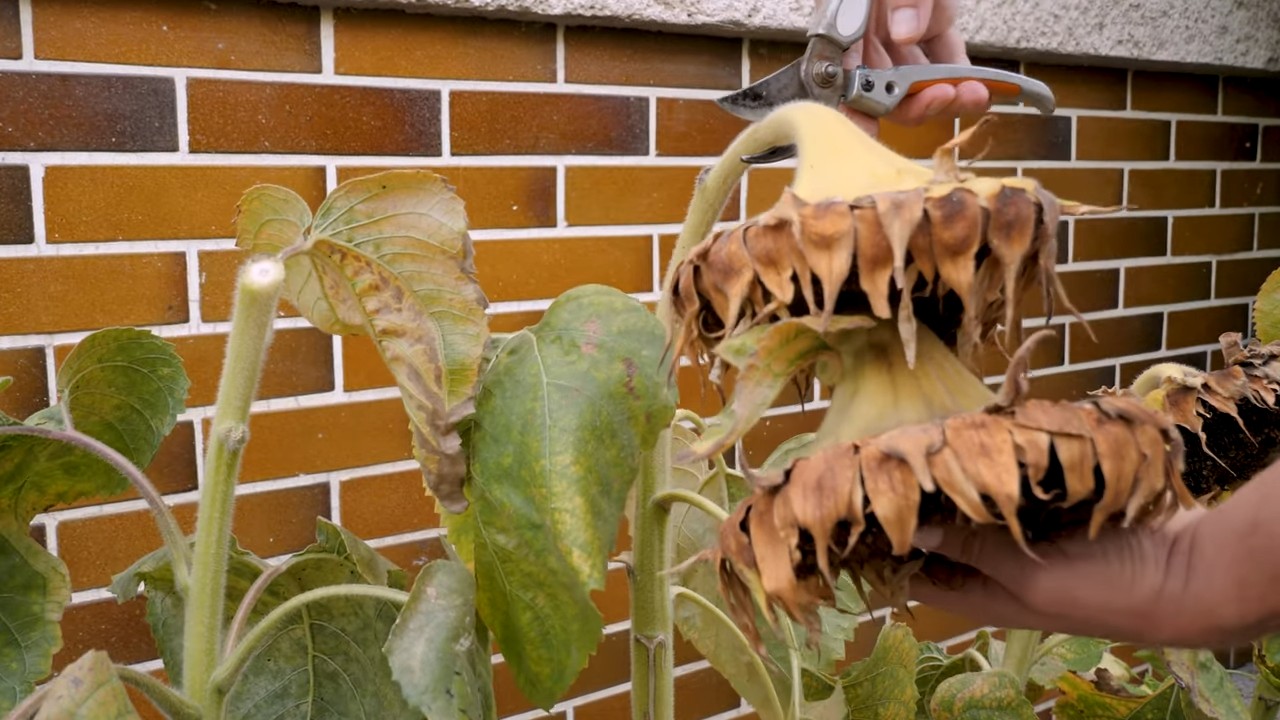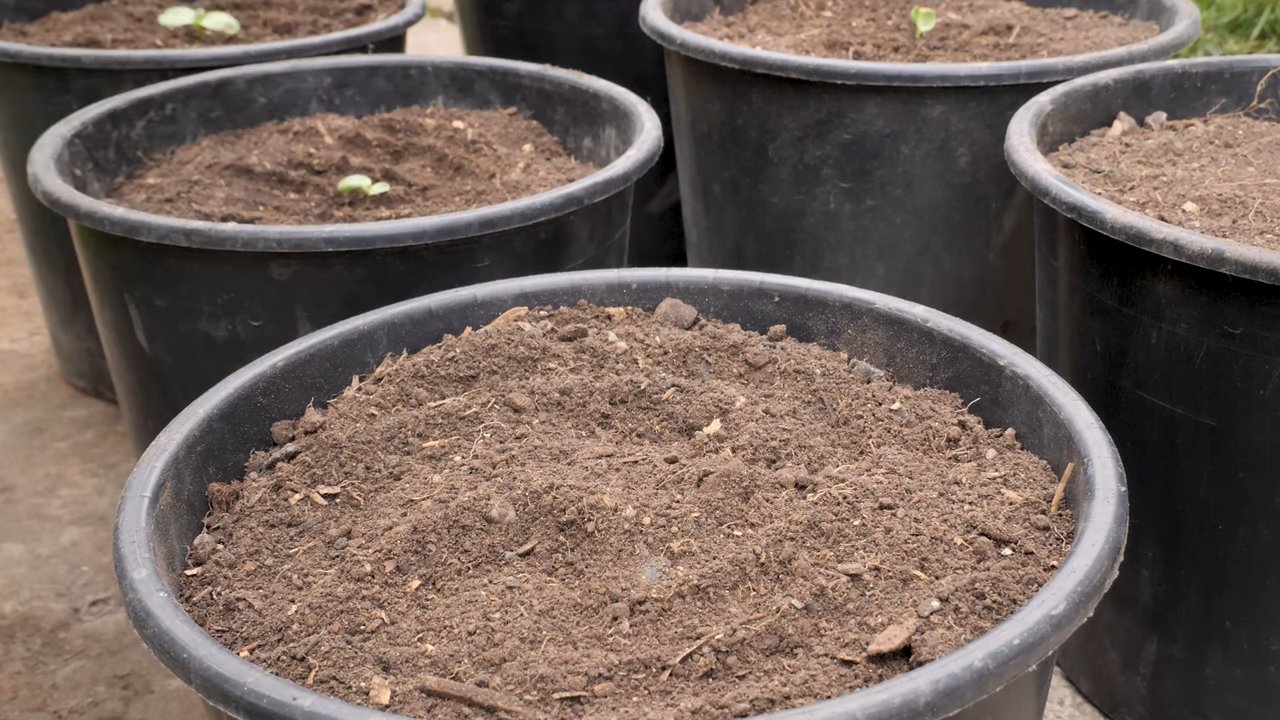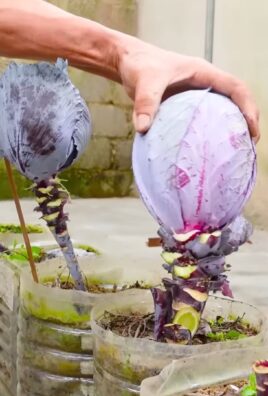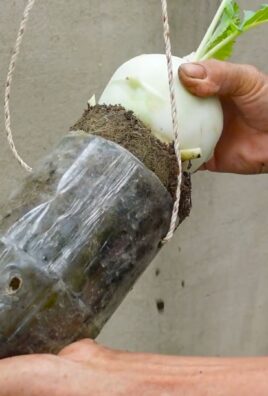Sunflower tower DIY projects are taking the gardening world by storm, and for good reason! Imagine a vibrant, towering spectacle of golden sunflowers, all neatly contained and easily accessible right in your backyard. Forget sprawling, unruly sunflower patches; we’re talking vertical gardening at its finest!
Sunflowers, with their cheerful faces and association with warmth and happiness, have been cultivated for centuries. Originating in North America, they were initially valued for their seeds and oil, playing a vital role in indigenous cultures. Now, we’re taking this iconic plant to new heights – literally!
But why a sunflower tower, you ask? Well, let’s face it, space is often a premium in modern gardens. This DIY project is perfect for maximizing your yield in a small area, whether you have a tiny balcony, a compact patio, or simply want to add a unique focal point to your existing garden. Plus, it’s a fantastic way to deter pests and make harvesting those delicious sunflower seeds a breeze. I’m excited to show you how to create your own stunning sunflower tower DIY project and bring a touch of sunshine to your outdoor space!

DIY Sunflower Tower: A Vertical Garden of Sunshine!
Hey there, fellow garden enthusiasts! I’m so excited to share this project with you – building a sunflower tower! It’s a fantastic way to grow a ton of sunflowers in a small space, creating a stunning vertical display that’s sure to be the envy of the neighborhood. Plus, it’s a really fun and rewarding project. Let’s get started!
What You’ll Need:
Before we dive in, let’s gather all the necessary materials. Trust me, having everything ready beforehand will make the whole process much smoother.
* Chicken Wire: You’ll need a roll of chicken wire, preferably with 1-inch openings. The size will depend on how tall and wide you want your tower to be. I usually go for a roll that’s at least 3 feet wide and 10 feet long.
* Landscape Fabric: This will line the inside of the tower and hold the soil in. Get a good quality fabric that’s durable and won’t tear easily.
* Zip Ties: Lots and lots of zip ties! These are essential for securing the chicken wire and landscape fabric. I recommend getting heavy-duty ones for extra strength.
* Potting Soil: You’ll need a significant amount of potting soil to fill the tower. Choose a high-quality mix that’s well-draining and rich in nutrients. I like to add some compost to mine for an extra boost.
* Sunflower Seeds: Of course, you can’t have a sunflower tower without sunflower seeds! I recommend using a variety of sunflower seeds, including dwarf varieties for the lower levels and taller varieties for the top. This will create a beautiful layered effect.
* Gloves: Protect your hands from the chicken wire and soil.
* Wire Cutters: For cutting the chicken wire.
* Scissors: For cutting the landscape fabric.
* Measuring Tape: To ensure accurate measurements.
* Stakes (Optional): If you live in a windy area, you might want to use stakes to secure the tower to the ground.
* Watering Can or Hose: For watering your sunflowers.
Building the Frame: The Chicken Wire Cylinder
This is where we start to bring our vision to life! Creating the chicken wire cylinder is the foundation of our sunflower tower.
1. Measure and Cut the Chicken Wire: Decide on the desired height and diameter of your tower. I usually aim for a tower that’s about 4-5 feet tall and 2-3 feet in diameter. Using your measuring tape and wire cutters, cut a piece of chicken wire that’s long enough to form a cylinder of that size. Remember to overlap the edges by a few inches for secure fastening.
2. Form the Cylinder: Carefully roll the chicken wire into a cylinder shape. Be cautious, as the edges of the chicken wire can be sharp.
3. Secure the Seam: Overlap the edges of the chicken wire and use zip ties to secure them together. Place the zip ties every few inches along the seam, ensuring a strong and stable connection. Trim the excess zip tie ends with your wire cutters.
Lining the Tower: Landscape Fabric Magic
Now, we need to line the inside of the chicken wire cylinder with landscape fabric to hold the soil in.
1. Measure and Cut the Landscape Fabric: Measure the height of your chicken wire cylinder and add a few extra inches to the measurement. This will allow you to fold the fabric over the top edge of the cylinder. Cut a piece of landscape fabric that’s wide enough to line the entire inside of the cylinder, with some overlap.
2. Line the Cylinder: Carefully place the landscape fabric inside the chicken wire cylinder, ensuring that it covers the entire inner surface. Overlap the edges of the fabric by a few inches.
3. Secure the Fabric: Use zip ties to secure the landscape fabric to the chicken wire. Place the zip ties every few inches along the top and bottom edges of the cylinder, as well as along the overlapping seam. Trim the excess zip tie ends.
4. Reinforce the Bottom (Important!): The bottom of the tower will bear the weight of all the soil, so it’s crucial to reinforce it. Fold the landscape fabric over the bottom edge of the chicken wire and secure it tightly with zip ties. You can even add an extra layer of landscape fabric to the bottom for added strength.
Planting Your Sunflowers: Seeds of Sunshine
This is the most exciting part – planting the sunflower seeds!
1. Add Soil Gradually: Start by adding a layer of potting soil to the bottom of the tower, about 6-8 inches deep.
2. Plant the First Row of Seeds: Gently press sunflower seeds into the soil, spacing them about 6-8 inches apart around the base of the tower. I like to use dwarf varieties for the bottom row, as they won’t grow as tall and won’t block the sunlight from the sunflowers above.
3. Continue Adding Soil and Seeds: Add another layer of potting soil, and then plant another row of sunflower seeds. Continue this process, working your way up the tower. As you move higher, you can use taller varieties of sunflowers.
4. Leave Space at the Top: Leave a few inches of space at the top of the tower for watering.
5. Water Thoroughly: Once you’ve planted all the seeds, water the tower thoroughly. Make sure the soil is evenly moist, but not waterlogged.
Caring for Your Sunflower Tower: Nurturing Your Garden
Now that your sunflower tower is planted, it’s important to provide it with the care it needs to thrive.
1. Sunlight: Sunflowers need at least 6-8 hours of direct sunlight per day. Place your tower in a sunny location where it will receive plenty of light.
2. Watering: Water your sunflowers regularly, especially during hot, dry weather. Check the soil moisture by sticking your finger into the soil. If the top inch feels dry, it’s time to water.
3. Fertilizing: Sunflowers are heavy feeders, so it’s important to fertilize them regularly. Use a balanced fertilizer according to the package directions. I like to use a liquid fertilizer every few weeks.
4. Pest Control: Keep an eye out for pests, such as aphids and caterpillars. If you notice any pests, treat them with an appropriate insecticide or organic pest control method.
5. Support (If Needed): As your sunflowers grow taller, they may need some support. You can use stakes or bamboo poles to prop them up.
6. Deadheading: Once the sunflowers have finished blooming, deadhead them by cutting off the spent flower heads. This will encourage the plant to produce more flowers.
Troubleshooting: Common Issues and Solutions
Even with the best care, you might encounter some challenges along the way. Here are a few common issues and how to address them:
* Sunflowers Not Germinating: Make sure the soil is moist and the seeds are planted at the correct depth. Also, check the expiration date on your sunflower seeds.
* Sunflowers Wilting: This could be due to lack of water, too much sun, or a disease. Check the soil moisture and adjust your watering schedule accordingly. If the wilting is due to a disease, treat the plant with an appropriate fungicide.
* Sunflowers Falling Over: This could be due to strong winds or the weight of the flower heads. Provide support with stakes or bamboo poles.
* Pests Infestation: Regularly inspect your sunflowers for pests and treat them promptly with an appropriate insecticide or organic pest control method.
Alternative Designs and Ideas: Let Your Creativity Bloom!
The beauty of DIY is that you can customize the project to suit your own preferences and needs. Here are a few alternative designs and ideas to inspire you:
* Tiered Tower: Create a tiered tower by using different sizes of chicken wire cylinders. This will add visual interest and allow you to grow a wider variety of sunflowers.
* Square Tower: Instead of a cylinder, you can build a square tower using wooden frames and chicken wire.
* Hanging Tower: Create a smaller version of the sunflower tower and hang it from a tree branch or pergola.
* Mixed Planting: Plant other flowers and herbs alongside your sunflowers to create a more diverse and colorful display. Marigolds, zinnias, and basil are all great companion plants for sunflowers.
* Add a Trellis: Attach a trellis to the back of the tower to provide extra support for the sunflowers and create a more dramatic effect.
Harvesting Sunflower Seeds: A Rewarding Finale
Once your sunflowers have matured and the flower heads have dried out, you can harvest the seeds. This is a rewarding way to enjoy the fruits (or rather, seeds!) of your labor.
1. Wait for the Flower Heads to Dry: Allow the flower heads to dry completely on the plant. The back of the flower head will turn brown and the seeds

Conclusion
So, there you have it! Building your own sunflower tower isn’t just a fun weekend project; it’s a game-changer for your garden. It’s a way to maximize space, create a stunning visual display, and provide a haven for pollinators, all while yielding a bountiful harvest of those glorious sunflower seeds. Forget those flimsy, store-bought supports that buckle under the weight of mature sunflowers. This DIY sunflower tower is sturdy, sustainable, and tailored to your specific needs.
Why is this a must-try? Because it addresses several common gardening challenges in one fell swoop. Limited space? The vertical design allows you to grow more sunflowers in a smaller footprint. Struggling with weak stems? The tower provides essential support, preventing those heartbreaking snaps in strong winds. Want to attract more bees and butterflies? Sunflowers are a magnet for these beneficial insects, and a tower overflowing with blooms is an irresistible invitation. Plus, the satisfaction of building something beautiful and functional with your own hands is simply unmatched.
But the beauty of this DIY project lies in its adaptability. Feel free to experiment with different materials. Instead of bamboo, consider using sturdy branches pruned from your own trees or reclaimed wood for a rustic touch. You could even incorporate metal rebar for an ultra-durable structure. For a more decorative look, paint the tower or add embellishments like colorful twine or mosaic tiles.
When it comes to sunflower varieties, the possibilities are endless. Plant a mix of different heights and colors for a truly spectacular display. Consider adding climbing vines like morning glories or sweet peas to the base of the tower for added visual interest and to attract even more pollinators. You can even interplant with companion plants like nasturtiums or marigolds to deter pests and improve soil health.
Don’t be afraid to get creative and personalize your sunflower tower to reflect your own unique style and gardening goals. The most important thing is to have fun and enjoy the process.
We wholeheartedly encourage you to give this DIY sunflower tower a try. It’s a rewarding project that will transform your garden and bring you joy for seasons to come. And once you’ve built your own masterpiece, we’d love to see it! Share your photos and experiences with us in the comments below or on social media using #SunflowerTowerDIY. Let’s inspire each other to create beautiful and sustainable gardens, one sunflower tower at a time. We are confident that this **DIY sunflower tower** will be a great addition to your garden.
Frequently Asked Questions (FAQ)
What type of sunflowers are best for a sunflower tower?
The best sunflowers for a tower are those that are relatively compact and have strong stems. Shorter varieties like ‘Teddy Bear’ or ‘Elf’ are excellent choices, as they won’t grow too tall and become top-heavy. Medium-sized varieties like ‘Autumn Beauty’ or ‘Incredible’ can also work well, but you’ll need to ensure your tower is sturdy enough to support their weight. Avoid planting giant sunflower varieties like ‘Mammoth’ or ‘Russian Giant’ in a tower, as they can easily topple over, even with support. Consider a mix of varieties for different heights and colors to create a visually appealing display.
How do I ensure my sunflower tower is strong enough to support the plants?
The strength of your sunflower tower depends on the materials you use and the construction method. Use sturdy materials like thick bamboo poles, strong branches, or metal rebar. Ensure that the vertical supports are firmly anchored in the ground. Reinforce the horizontal supports with strong twine, wire, or zip ties. As the sunflowers grow, regularly check the tower for any signs of weakness or instability and make any necessary repairs or adjustments. If you’re using taller sunflower varieties, consider adding extra support by tying the stems to the tower with soft twine.
How often should I water and fertilize my sunflower tower?
Sunflowers are heavy feeders and require regular watering and fertilization, especially when grown in a tower. Water deeply and regularly, especially during hot, dry weather. Aim to keep the soil consistently moist but not waterlogged. Fertilize every 2-3 weeks with a balanced fertilizer or a fertilizer specifically formulated for flowering plants. You can also amend the soil with compost or other organic matter to provide slow-release nutrients. Avoid over-fertilizing, as this can lead to excessive foliage growth and weaker stems.
What are some common pests and diseases that affect sunflowers, and how can I prevent them?
Sunflowers are generally relatively pest-resistant, but they can be susceptible to certain pests and diseases. Common pests include aphids, sunflower beetles, and seed weevils. Diseases include powdery mildew, rust, and downy mildew. To prevent these problems, choose disease-resistant sunflower varieties, practice good sanitation by removing any dead or diseased plant material, and avoid overcrowding the plants. You can also use organic pest control methods like insecticidal soap or neem oil to control pests. For fungal diseases, ensure good air circulation and avoid overhead watering.
Can I grow other plants in my sunflower tower?
Yes, you can definitely grow other plants in your sunflower tower! Companion planting can be beneficial for both the sunflowers and the other plants. Good companion plants for sunflowers include nasturtiums, marigolds, and zinnias, which can help deter pests and attract pollinators. You can also plant climbing vines like morning glories or sweet peas at the base of the tower to add visual interest and attract even more pollinators. Avoid planting plants that will compete with the sunflowers for sunlight or nutrients.
How do I harvest sunflower seeds from my tower?
Harvesting sunflower seeds from your tower is relatively easy. Wait until the back of the sunflower head turns brown and the petals begin to dry and fall off. Cut the sunflower head off the stem, leaving a few inches of stem attached. Hang the sunflower head upside down in a dry, well-ventilated place for a few weeks to allow the seeds to dry completely. Once the seeds are dry, you can easily remove them by rubbing the sunflower head with your hands or a stiff brush. Store the seeds in an airtight container in a cool, dry place.
What if my sunflowers in the tower start to lean or fall over?
If your sunflowers start to lean or fall over, it’s usually a sign that they need more support. Check the tower to ensure that it’s sturdy and that the vertical supports are firmly anchored in the ground. You may need to add extra support by tying the sunflower stems to the tower with soft twine. If the sunflowers are leaning due to strong winds, consider providing additional wind protection by placing a temporary barrier around the tower. In some cases, leaning can also be a sign of nutrient deficiency or root problems. Ensure that you’re watering and fertilizing the sunflowers adequately and that the soil is well-draining.





Leave a Comment